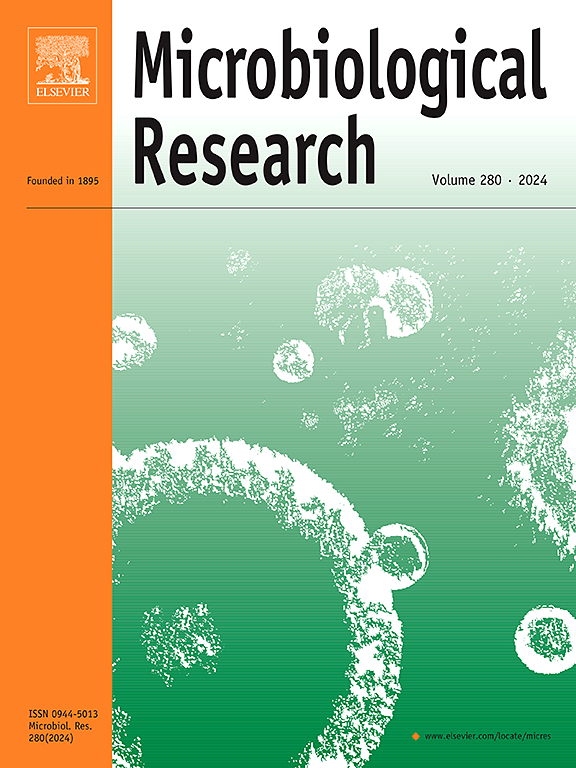Copper ions induces ferroptosis in Staphylococcus aureus and promotes healing of MRSA-induced wound infections
IF 6.1
1区 生物学
Q1 MICROBIOLOGY
引用次数: 0
Abstract
The emergence of multidrug-resistant bacteria, particularly methicillin-resistant Staphylococcus aureus (MRSA), poses a significant threat to public health, necessitating new antimicrobial strategies. Here, we demonstrate that low doses of copper sulfate (CuSO4) exhibit potent bactericidal effects against both S. aureus and MRSA by inducing ferroptosis. CuSO4 treatment causes bacterial cell membrane perforation, increases intracellular free copper (Cu+) and ferrous ions (Fe2+), elevates reactive oxygen species (ROS) production and lipid peroxidation, and triggers the intracellular Fenton reaction. The use of ROS scavengers, copper chelators, iron chelators, and iron oxidase inhibitors attenuated ROS levels and lipid peroxidation, reducing Cu2+-mediated cell death, confirming the role of ferroptosis. Proteomic analysis revealed that Cu2+ enhances the expression of Fur protein, mediates iron release from intracellular stores, and inhibits glutathione biosynthesis. Furthermore, we developed a sodium alginate hydrogel loaded with CuSO4 (Cu-SA), which significantly improved wound healing and reduced inflammation and organ damage in an MRSA-infected mouse skin model. Our findings suggest that Cu2+-induced ferroptosis offers a promising alternative to traditional antibiotics for treating MRSA infections, providing a novel strategy to combat antibiotic resistance in S. aureus.
铜离子诱导金黄色葡萄球菌铁下垂并促进mrsa诱导的伤口感染愈合
耐多药细菌,特别是耐甲氧西林金黄色葡萄球菌(MRSA)的出现对公共卫生构成重大威胁,需要新的抗微生物战略。在这里,我们证明了低剂量的硫酸铜(CuSO4)通过诱导铁下垂对金黄色葡萄球菌和MRSA都有有效的杀菌作用。CuSO4处理导致细菌细胞膜穿孔,增加细胞内游离铜(Cu+)和亚铁离子(Fe2+),提高活性氧(ROS)的产生和脂质过氧化,并引发细胞内芬顿反应。ROS清除剂、铜螯合剂、铁螯合剂和铁氧化酶抑制剂的使用减弱了ROS水平和脂质过氧化,减少了Cu2+介导的细胞死亡,证实了铁凋亡的作用。蛋白质组学分析表明,Cu2+增强了Fur蛋白的表达,介导细胞内铁的释放,抑制谷胱甘肽的生物合成。此外,我们开发了一种海藻酸钠水凝胶,负载CuSO4 (Cu-SA),可显著改善mrsa感染小鼠皮肤模型的伤口愈合,减少炎症和器官损伤。我们的研究结果表明,Cu2+诱导的铁下垂为治疗MRSA感染提供了一种有希望的替代传统抗生素,为抵抗金黄色葡萄球菌的抗生素耐药性提供了一种新的策略。
本文章由计算机程序翻译,如有差异,请以英文原文为准。
求助全文
约1分钟内获得全文
求助全文
来源期刊

Microbiological research
生物-微生物学
CiteScore
10.90
自引率
6.00%
发文量
249
审稿时长
29 days
期刊介绍:
Microbiological Research is devoted to publishing reports on prokaryotic and eukaryotic microorganisms such as yeasts, fungi, bacteria, archaea, and protozoa. Research on interactions between pathogenic microorganisms and their environment or hosts are also covered.
 求助内容:
求助内容: 应助结果提醒方式:
应助结果提醒方式:


